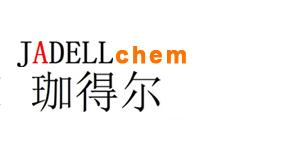Recombinant human IL-17 是一种来源于 E. coli 的促炎细胞因子。
Synonyms
rHuIL-17; IL-17A; Cytotoxic T-lymphocyte-associated antigen 8; CTLA-8
Species
HumanSource
E. coli Accession
Q16552 Gene ID
3605 Molecular Weight
Approximately 15.3 kD AA Sequence
IVKAGITIPR NPGCPNSEDK NFPRTVMVNL NIHNRNTNTN PKRSSDYYNR STSPWNLHRN EDPERYPSVI WEAKCRHLGC INADGNVDYH MNSVPIQQEI LVLRREPPHC PNSFRLEKIL VSVGCTCVTP IVHHVA Biological Activity
The ED50 is <10 ng/mL. Appearance
Lyophilized powder. Formulation
Lyophilized after extensive dialysis against 20 mM PB, pH 7.4. Endotoxin Level
<1 EU/μg, determined by LAL method. Reconstitution
Reconstitute the lyophilized recombinant Human Interleukin-17 (rHuIL-17) to 100 µg/mL using ddH2O. Storage & Stability
Lyophilized recombinant Human Interleukin-17 (rHuIL-17) is stored at -20°C. After reconstitution, it is stable at 4°C for 1 week or -20°C for longer. It is recommended to freeze aliquots at -20°C or -80°C for extended storage. Shipping
Room temperature in continental US; may vary elsewhere. Background
The interleukin-17 (IL-17) cytokines, IL-17A to IL-17F, are emerging as critical players in host defence responses and inflammatory diseases. The interleukin-17 (IL-17) cytokines are emerging as key players in immune responses. The first member to be identified, IL-17A, is originally cloned as cytotoxic T-lymphocyte antigen-8, a gene sharing homology with the HSV13 gene from herpesvirus Saimiri. The other members, IL-17B to IL-17F are subsequently identified based on their homology to IL-17A. These proteins are highly conserved at the C terminus, and contain five spatially conserved cysteine residues that mediate dimerization. Members of the IL-17 receptor family, IL-17RA to IL-17RE, mediate the biological functions of these cytokines. Accumulating evidence indicates that these interactions induce pro-inflammatory programmes[1]. |



